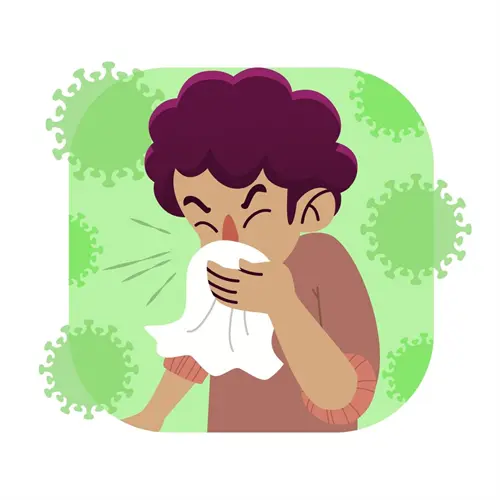Health Wellness
Salmonella: Infection, Symptoms, Causes, Treatment & Prevention
5684 Views
0

What is Salmonella?
Salmonella is a gram negative bacterium which causes typhoid, paratyphoid fever and salmonellosis (gastrointestinal infection)
Salmonella infection is typically caused by the ingestion of undercooked or raw poultry, eggs, or egg products, as well as by consuming unpasteurized milk. The incubation time might range from one to thirty days.
Salmonella exists in almost 2,500 forms; however, less than 100 of these forms are known to infect people. Salmonella typhi and Salmonella paratyphi, cause typhoid and paratyphoid fever, both potentially fatal diseases. However, most salmonella bacteria forms are known to cause gastrointestinal conditions.
Typhoid Salmonella
Salmonella Typhi causes typhoid fever by attacking and infecting the blood and digestive system. The S. Paratyphi A & B cause a related but less severe form of typhoid fever,.
Causes and Symptoms
Salmonella infection can be contracted through the following agents:
- Consuming food or drink prepared by a carrier or an infected person: A carrier in this context is a person who has overcome the disease but continues to carry the bacteria having caused it. Such latently present bacteria can spread to others through food or drinks. According to estimates from the Food and Drug Administration[1] (FDA), salmonella-contaminated eggs are responsible for 79,000 incidents of foodborne disease each year in the United States. You can lower the risk of salmonella contamination by consuming cooked eggs. However, several popular condiments, including mayonnaise, sometimes include raw eggs.
- Consuming food prepared on surfaces containing raw meat: Food prepared over cutting boards, countertops, or other surfaces on which raw meat was preserved or prepared can cause the spread of salmonella. You can prevent the spread of the infection through such surfaces by ensuring they are spotless. Also, rinse your hands before preparing food, after using the restroom, and after changing a baby's diapers. The infection can also spread through touch or contact with regularly used objects and surfaces.
- Salmonella is prevalent in various creatures, including turtles, snakes, lizards, chicks, and young birds. You typically risk contracting salmonella infection if you touch these birds, their feces, or any surfaces in their habitats, including thief cells, pens, and the ground. Holding, kissing, or petting these animals and birds can make you susceptible to the infection.
Some symptoms of salmonella infection include:
- Vomiting
- Chills
- Diarrhoea
- Stomach (abdominal) cramps
- Fever
- Nausea
- Vomiting
- Chills
- Headache
- Blood in the stool
The signs and symptoms of salmonella infection typically persist for a few nights to a week. Although diarrhea may continue for up to 10 days, bowel movements may take several months to return to normal. Typhoid fever, a fatal illness particularly prevalent in developing nations, is caused by a small number of salmonella bacteria species.
Diagnosis
Salmonella can cause typhoid, paratyphoid fever and salmonellosis (infection of the gastrointestinal tract) and a range of other pyogenic infections.. Early diagnosis can help prevent and control the spread of this infection.
Lab Testing
For diagnosis of typhoid fever blood culture and serological tests, detecting antibodies, are usually done. Blood culture is considered the gold standard. In addition to detection, it can help decide which antibiotic treatment will be most suitable for the patient. However, the sensitivity of this test depends upon multiple factors like proper sample collection and history of intake of antibiotics. Serological tests are also used in diagnosis but do not reveal the suitable antibiotic for the patient.
Serological tests including Widal test and Typhidot test (IgM antibody detection) are used in diagnosis of typhoid. Out of these, detection of IgM antibodies against a specific antigen (as done in typhidot test) is considered a better option as there are no false positive results.
A PCR test to detect DNA of salmonella is also available. This is the most sensitive out of all the tests.
For diagnosis of salmonellosis a stool culture test is done.
Treatment
Although in some cases, one’s bowel function may not return to normal for weeks or months, most salmonella patients typically recover completely in about a week. Salmonella can sometimes be fatal in severe cases, especially if appropriate and immediate treatment is not undertaken after disks.
Typically, antibiotics are only used to treat patients. Hospitalization may be necessary in some cases.
Prevention
Preventing infection is the best way forward. Since non-typhoidal salmonellosis is typically a foodborne illness in the United States infection prevention only necessitates a few straightforward food safety measures. Restaurants, marketplaces, and even manufactured items like peanut butter, ice cream, flatbread pizzas, and breakfast cereal have caused salmonella outbreaks.
Conclusion
Salmonella causes typhoid and food poisoning. Antibiotics are used to treat typhoid fever. Salmonella infections are generally curable if diagnosed in a timely manner and appropriate treatment is given























 WhatsApp
WhatsApp